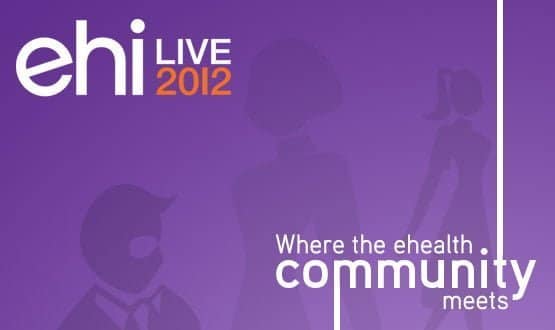Small is beautiful
- 8 November 2012

The view from the top at EHI Live 2012 was clear and consistent: without IT the NHS cannot deliver the savings, efficiencies and quality gains demanded of it.
In fact, so clear and consistent was the message that the two opposing politicians on the platform – health minister Dr Dan Poulter and his shadow Andrew Gwynne – might easily have shared large parts of their scripts.
So, according to Dr Poulter, “information technology is very much part of the future of the NHS” – and we must all embrace it to deliver the kind of choice and quality in the NHS that new technology has delivered to other parts of our lives.
While, according to Gwynne: “There is a real opportunity for the better use of information technology in the NHS, and we should be looking to ways to maximise IT in the NHS.”
Both politicians also wanted a balance between what is best done locally and what needs to be done nationally.
And both agreed that telehealth is a jolly good idea; whatever anyone says about the business model and what really emerged from the whole system demonstrator trails.
What’s NPfIT is done
Unfortunately, the minister and his shadow might equally have shared the great big holes in their speeches.
Both were clear that the past was over and done with – Gwynne even came close to apologising for the National Programme for IT in the NHS – and that we must now look to the future.
But neither had a road map. Gwynne at least wanted to “engage” with the NHS IT community as Labour develops its health IT policy.
Dr Poulter merely wanted to see “local drive and leadership” – although he came close to promising that the new ministerial team at the DH will push ahead with the information strategy drawn up by now former health secretary Andrew Lansley, and not embark on another bout of upheaval.
Small is beautiful
This was not the only reality gap apparent between the top of the conference programme and the real world presentations from trusts and suppliers, both in the theatres and on the exhibition floor.
Take the rhetoric about small and medium sized enterprises. Speech after speech talked about the need to engage with the vibrant SME sector and the benefits that the NHS could wring from making more use of it.
Liam Maxwell, deputy chief government information officer, gave a rousing speech in which he said that SMEs were generally much cheaper and more flexible than large companies.
He said the Cabinet Office wanted to see huge public sector contracts “disaggregated” so SMEs could win more work from smaller and more agile projects.
Bob Gann, director of partnerships and strategy at NHS Choices, urged the NHS to make better use of the sector in the search for new ways to engage with patients and the public online and via social media.
And Markus Bolton, co-founder of Shearwater Healthcare Solutions, urged NHS organisations to include the sector in tenders.
He argued that this would enable the health service to take advantage of more imaginative thinking and approaches; even if trusts went on to work with a large company.
But on the floor of the exhibition, many of these SMEs were close to despair at their continued exclusion from NHS business.
“You can’t get a sniff if you don’t have a turnover of over £100m,” said one. “I am struggling every month to pay my staff. Yet everyone I talk to is excited by what we are trying to do.”
Opening up
Other exhibitors reported considerable interest from the record number of delegates and visitors to the show for what they had to offer.
And there was evidence that more disruptive entrants to the healthcare IT market are starting to gain traction.
The open source Skunkworks returned after its successful launch in 2011 with a vibrant stand full of demonstrations, skill guides and talks and a debate about open source on the main arena.
More than one speaker praised the work of HANDI – the not for profit Healthcare App Network for Development and Innovation.
There was even evidence of open source gaining traction in national projects. Tim Straughan, chief executive of the NHS Information Centre, promised that the new data feeds and data linkage service that it is building will be on an open source platform.
The IC is already being approached by companies who want to do clever things with the 40m lines of data a month that it is now churning out. Who knows what might be possible in future?
Getting clinicians involved
Simply buying new IT, of any kind, is not enough. Trusts need to get staff to use it; and the public needs to see a point to all those new services and apps.
Last year, eHealth Insider launched the EHI CCIO Campaign to make a real dent in the first problem, by encouraging every NHS organisation to appoint a chief clinical information officer to lead on IT and information projects.
EHI is now running a CCIO Leaders Network to take forward the campaign, and it held its first annual conference at EHI Live 2012.
Over two days, doctors, nurses and other professionals from primary care, acute care, community care, mental health and tertiary settings discussed what needed to be done to embed clinical leadership in the wider world of informatics. Even a year ago such an event was unimaginable in the UK.
Messy reality
Back on the market front, EHI Intelligence’s latest market forecast report showed that local IT spending by acute trusts in England is rising, albeit slowly, and that IT departments expect to grow.
Trusts have developed IT strategies – usually looking ahead three to five years but some with a seven-year trajectory. And a quarter are reporting that they will soon be looking to run big patient administration replacement and electronic patient record projects.
The pattern in the here and now, though, is one of trusts buying systems that provide a rapid return on investment – document management, portals, digital pens, mobile applications and teleconferencing and the like.
So, again, there is a gap between the rhetoric and the reality. As Jon Hoeksma, EHI editor, pointed out: “The policy position from the centre is less interested in electronic patient records but is looking for transformative use of technology to deliver healthcare in different ways.
“There is a significant gap between what’s being anticipated by policy makers from the centre and what trusts are actually doing.”
It is a messy world in the NHS right now where the reality gap between policy makers and the real world grows by the day; IT is no exception.
As EHI Live 2012 shows, technology is now, more than ever, seen as the solution not the problem. The creativity is there – the challenge for the NHS is to unleash it.




